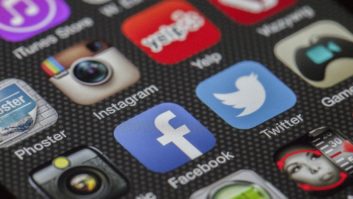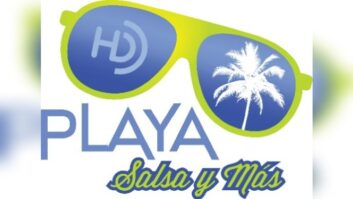
Jeff Schick is the director of technology for Sprite Media and a former radio engineer who worked with Clear Channel, Westwood One and Emmis Communications in New York. Sprite Media launched back in January with the primary focus of bringing digital signage to the world of radio. Digital signs have made their presence felt as of late and Schick believes that digital signage can “push the radio station into the future.”
Radio World recently chatted with Schick about Sprite Media and what digital signage can do for radio.
Radio World: What does Sprite Media do?
Jeff Schick: We provided digital signage specifically for radio. We have the TV displays that you’ve probably seen in fast-food restaurants, coffee shops, real estate offices and gas stations; they’re all over the place. But we’re doing the screens specifically for radio stations.
RW: How is this different than what other signage companies offer?
Schick: As far as I know, nobody is doing this for the radio business. There are plenty of traditional sign guys, who make the old-fashioned signs that are going into this, but I’m the other way. I’m a TV/radio guy going sideways into making these displays. So the display should have more of a TV image rather than someone just slapping a PowerPoint up.
RW: How can they be applied to radio studios?
Schick: There are different screens. You can have one in the lobby, you can have in the DJ booth, one for the staff, you can have one for the program director, one in the newsroom, and they all serve different functions and have different content on them. For example, the DJ would have a Twitter feed so he can relay information. The lobby screen can have a welcome message for guests. That message can be controlled by the receptionist or a staff member who can just go on an app on their phone and type in new names and it goes right to the display. These are live signs that are plugged into the Internet.
We have newsfeeds and we have zippers, so anything that is happening in the news will go to the screen as soon as the news source reports it. There’s also some cool stuff like QR codes. So let’s say you’re in the lobby of the radio station. You can just swipe your phone and the Facebook page would come up, or the web page, it’s whatever you want. Plus there are opportunities for the radio station to advertise.
RW: What makes this a thing of value for radio stations?
Schick: The signs have the different purposes, as I mentioned. If radio stations have guests waiting in their lobby for 30 minutes, a digital sign can make that wait time seem much less. During that wait time, radio stations can take the opportunity to pass along station information and upcoming station events. Someone in the waiting room who is a captive audience can find out a lot more about the station while they’re there, whether they are a sponsor or someone who won concert tickets.
As far as the DJ, or a screen for program director, this helps workflow. A program director can type in on their phone when something important happens … that can immediately appear on what I call the whiteboard on the screen, appearing in the DJ studio so that every jock doing a shift can look up and see something informative that deals with the station.
I was just talking with another radio engineer and he said usually when some big event happens he has to either call or email the jock, but when the jock leaves that information may not make it to the next one. So there’s workflow and consistency with it. This is right in front of you as opposed to a disc jockey searching on the Internet for one thing or another. Plus, the whole social media concept that a lot of radio stations are going into, which is you’ll have your Twitter feed right in front of you.
I look at this as what Web pages were 10 years ago. Ten years ago some stations had them and some didn’t, but now just about every radio station has a web page. I see this as something that will grow. There are also promotional things you can do with these screens, you can put a screen in the shopping mall, which will display the current song on the air, news about the station, there’s a lot of stuff you can do. Think of it like a Chinese restaurant menu, there are a lot of options on it.












